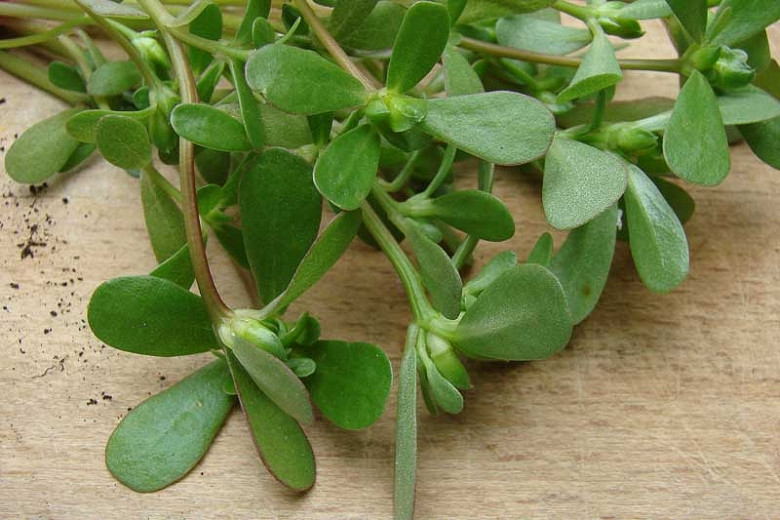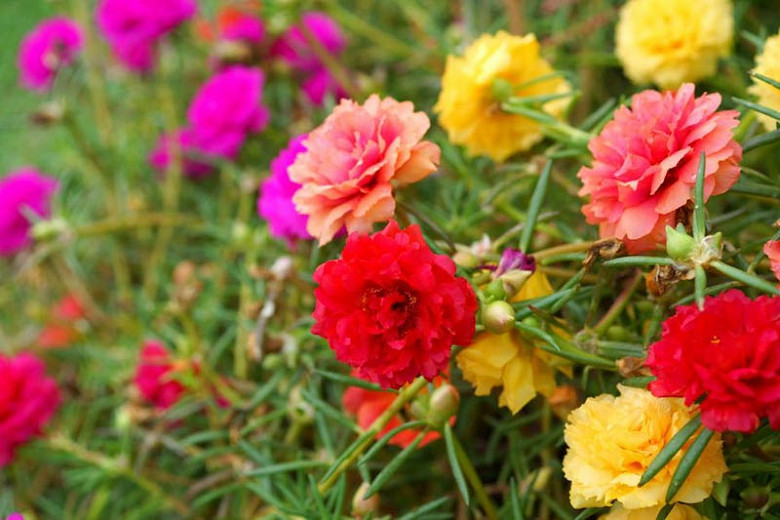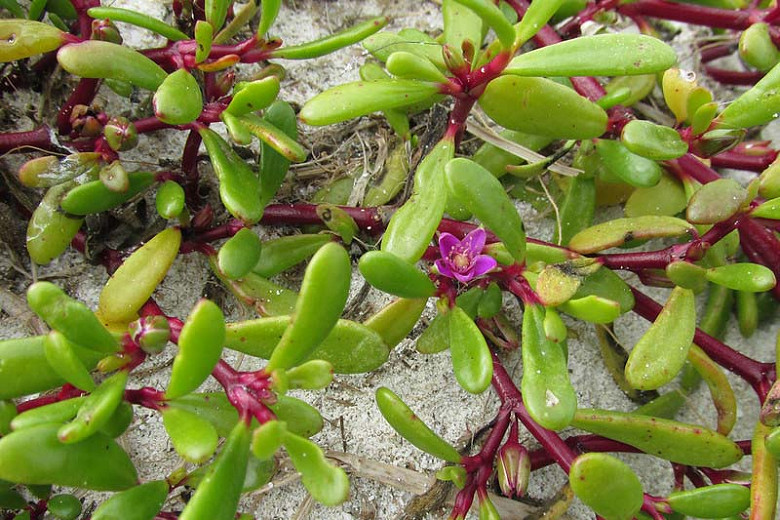Portulaca oleracea (Purslane)
Grown for more than 4,000 years as a food and medicinal plant, Portulaca oleracea (Purslane) is a fast-growing herbaceous annual forming a mat of soft trailing, smooth, reddish stems clothed with fleshy, oval to spoon-shaped, succulent leaves. Small ephemeral yellow flowers, up to 1/2 in. (1 cm), occur in the leaf axils at the stem joints or terminally, with just a single one opening in each leaf cluster at a time. They are followed by tiny black seeds in a small pod. When the seeds are mature, the ovoid capsule bursts open to release its contents. The entire plant can be harvested. The leaves are tender and fleshy, with a slightly crunchy texture. They are rich in vitamins A, C, and E. Harvest them before flowering or the flavor will deteriorate. Purslane is used in many cuisines around the world, especially in salads, soups, stews, and tomato sauces.
- Grows up to 3 in. tall (7 cm) and 18 in. wide (45 cm). This plant self-seeds readily.
- Thrives in most well-drained soils in full sun to light shade. Although it prefers regular water, it can tolerate drought. For a tender, generous crop, keep the soil moist at all times.
- No serious insect or disease issues. Keep an eye out for slugs, purslane sawflies, Schizocerella pilicornis, and Hypurus bertrandiperris.
- Plant the seeds after the soil warms in spring. During the growing season, the trailing branches will root where they touch the ground – detach the rooted tips and plant them out.
- Native to North Africa, the Middle East, and the Indian subcontinent.
- Toxic to dogs, toxic to cats, toxic to horses.
- Find where this species is invasive in the United States.
Requirements
| Hardiness | 2 – 12 |
|---|---|
| Climate Zones | 1, 1A, 1B, 2, 2A, 2B, 3, 3A, 3B, 4, 5, 6, 7, 8, 9, 10, 11, 12, 13, 14, 15, 16, 17, 18, 19, 20, 21, 22, 23, 24, A1, A2, A3, H1, H2 |
| Plant Type | Annuals, Herbs |
| Plant Family | Portulaca |
| Exposure | Full Sun |
| Season of Interest | Spring (Late)Summer (Early,Mid,Late)Fall |
| Height | 2" – 3" (5cm – 7cm) |
| Spread | 1' – 2' (30cm – 60cm) |
| Spacing | 18″ (45cm) |
| Water Needs | Average |
| Maintenance | Low |
| Soil Type | Chalk, Clay, Loam, Sand |
| Soil pH | Acid, Alkaline, Neutral |
| Soil Drainage | Moist but Well-Drained, Well-Drained |
| Tolerance | Drought |
| Garden Styles | Informal and Cottage |



